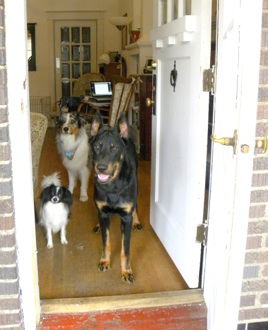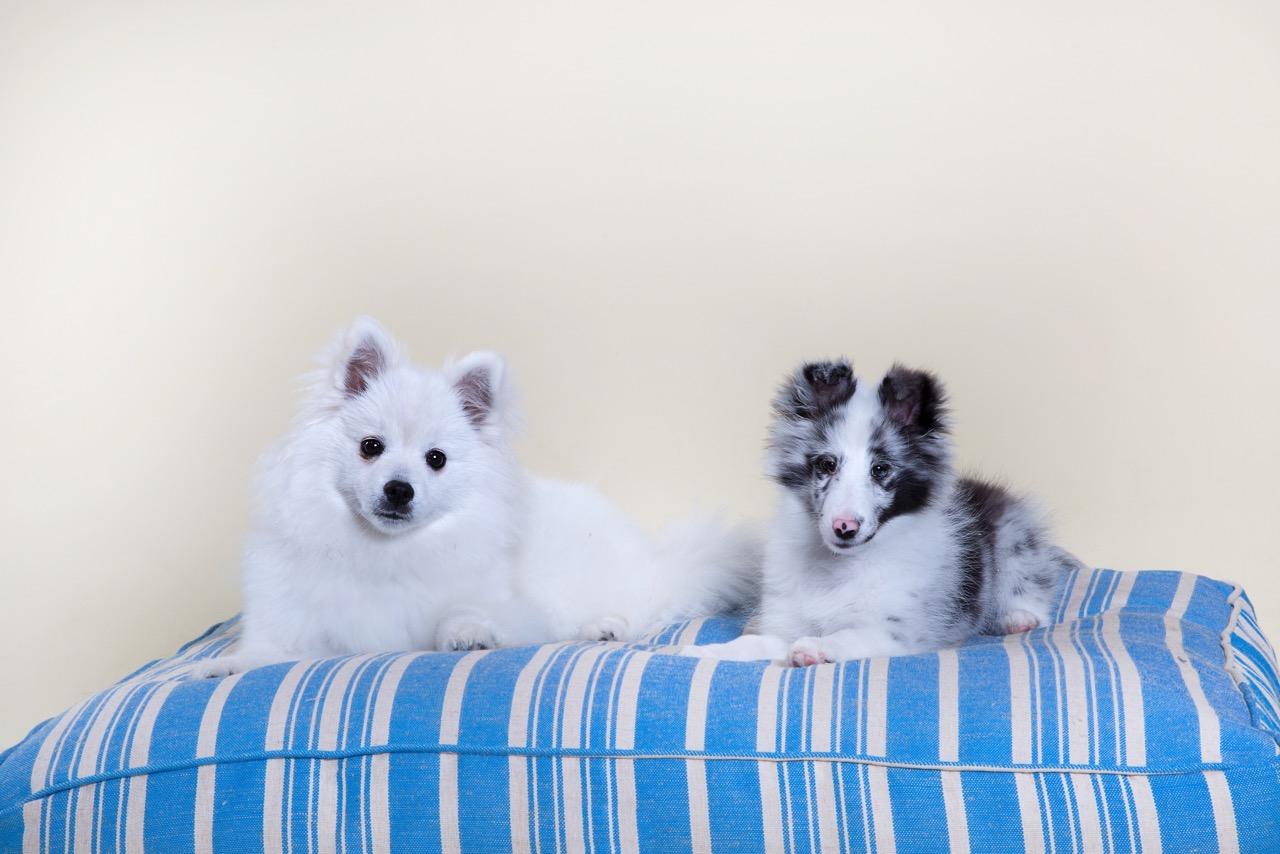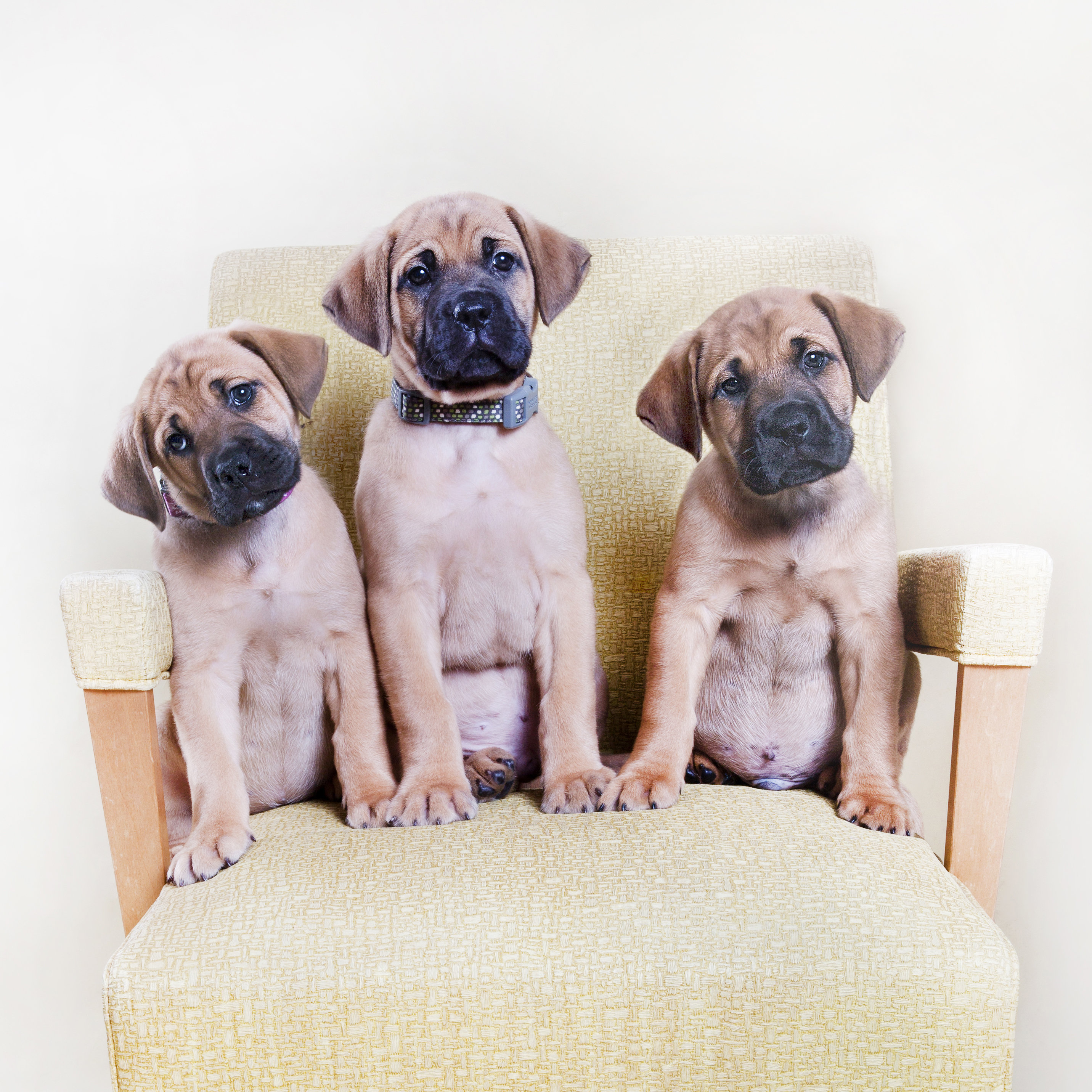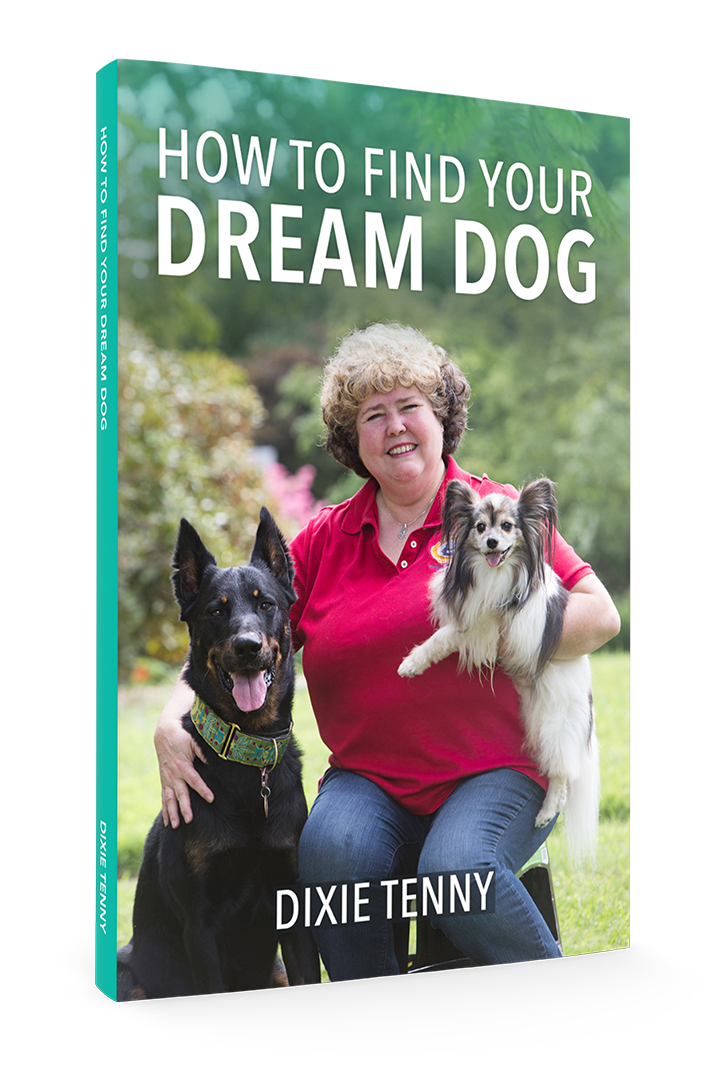My puppies begin to learn the meaning of the word ‘wait’ from the very first day they join my household. I use ‘wait’ many times a day, every day, with all of my dogs.
‘Wait’ means ‘pause and wait for further instructions.’ I ask my dogs to wait before running out the door, before jumping into the car, before jumping out of the car, at the top of the steps while I walk down, at the bottom of the steps while I walk up, and in many other situations. I think it is one of the most useful cues a puppy can learn.


Wait is easy to teach. Every time you walk to the door to take your puppy outside, stop just as you reach the door, take hold of the doorknob, say ‘wait’ and give your puppy a treat. If your puppy needs to be carried to the door, you can still do this exercise; just pause right at the door, say ‘wait’ and give the puppy a treat before opening the door and taking him outside. A cue should also be used that means ‘you are free to go through the doorway now.’ You could use ‘outside!’, ‘go to the yard,’ ‘let’s go,’ or anything you like.
Do this every single time you take your puppy outdoors. Every time, without exception.
You want your puppy to learn that not only does he get a treat in the pause before the door opens, pausing is also the only way to get the door to open at all.
Do this in every situation in which you will want your puppy to wait in the future. For example, I have a set of steps that leads down to the unfenced front yard from my front porch. So my puppy gets one treat for his ‘wait’ at the front door, and another at the top of the steps. Even when he is too small to go down the steps on his own, reinforcing the ‘wait’ at the top of the steps is insurance against the day when racing out the door and straight down the steps would be all too easy for him.
If you use a clicker, clicking at the moment your puppy pauses after you say ‘wait’ will help speed his learning process.
Vary the number of treats you deliver each time. If your puppy isn’t sure whether more treats might be coming, he will be more inclined to continue to wait to find out. If you always give him one treat, he will tend to take that treat and then stop focusing on you.
Very soon your puppy will begin to stop and look up at you in anticipation of his treat as you approach the door, or wherever you have been working on this cue. Smart puppy!
When this is happening consistently, you can use the hand that is on the doorknob to crack the door ever so slightly (so that your puppy cannot get through) after saying ‘wait’ to your puppy, but before you give him his treat. If he holds his wait, give him his treat(s) and his cue to go outside. If he tries to go forward, just freeze and wait until he realizes he can’t get through and looks at you – treat and give cue to go through the door.
Do not open the door any wider until your puppy is making no effort whatsoever to go through it, but holding his ‘wait’ and looking at you for his treat(s). Then you can begin to increase how much you open the door, in very small increments. Never push the puppy to failure by moving ahead too quickly. You are training well if you are helping your puppy be successful at every small step.
Eventually the real-life rewards of getting to go outside, into the car, or in other situations where you use ‘wait’ will be reward enough, and you won’t need to use treats any more. However, even then, producing an occasional treat for a ‘wait’ can keep the behavior strong.

By entering your name and email below, you'll grab the Introduction of
How to Choose Your Dream Dog for FREE
How to Choose Your Dream Dog for FREE


Great post Dixie! A simple, effective and yet often overlooked exercise that could save your dog’s life.